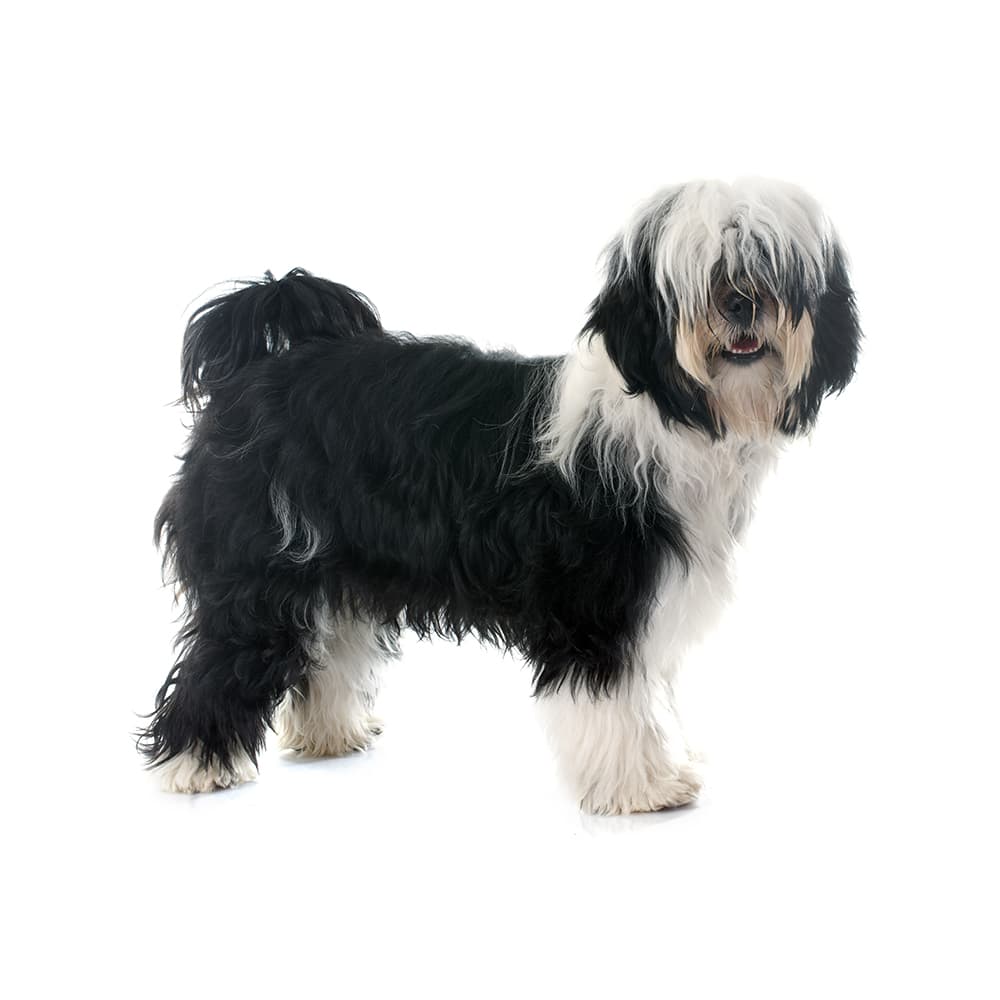Discover your dog's connection to this breed and 200+ others


Discover your dog's connection to this breed and 200+ others



The Tibetan Terrier breed originated in the mountainous region of Tibet over 2000 years ago and is one of the oldest breeds to come out of that region. They were bred and kept by Buddhist monks (or Lamas) in monasteries, not as herders or hunters, but as companions, good luck charms, and occasionally guard dogs. The name "Tibetan Terrier" is somewhat of a misnomer as these dogs were not used for typical terrier work such as hunting or burrowing after small game, but the name was given by European travelers due to the dog's size, which is similar to terrier breeds known in the west. The breed was introduced to the western world in the 1920s.
Tibetan Terriers can suffer from joint issues when spayed or neutered too early. They may also be affected by geriatric heart murmurs, hypothyroidism, distichiasis, ceroid lipofuscinosis, vestibular disease, skin allergies, thyroid issues, bladder stones, periodontal disease, hip and patella issues, and cancer. They are also prone to eye disorders such as cataracts and progressive retinal atrophy. Genetic testing for these and other conditions including degenerative myelopathy, neuronal ceroid lipofuscinosis, primary lens luxation, progressive retinal atrophy is recommended.
Tibetan Terriers are known for their loyal, affectionate, and sensitive nature. They are usually very attached to their family members and can be wary of strangers. Despite their somewhat reserved nature, they can also be playful and lively, particularly when interacting with their loved ones. These dogs are intelligent and can be trained well with positive reinforcement methods, though they can also exhibit a stubborn streak.
A canine genetic lineage is a group of individuals or entire breeds that descended from common ancestors predating modern breed formation. Often these lineages are associated with a ‘type’ of dog with a unique historical working role and associated behaviors (e.g., herding, scent hunting, etc.).
Breeds within the toy dog lineage were developed to be companion animals. They originated as lap dogs for royalty, nobility, and affluent individuals, and typically weigh less than 15 pounds. Breeds within the toy dog lineage were bred to be friendly and sociable, playful, and energetic while also having a heightened awareness of their environment.
Example breeds with ancestry from this lineage include Chihuahua, Maltese, and Shih Tzu.
The Tibetan Terrier has also been called Tsang Apso, meaning "shaggy or bearded dog, from the province of Tsang".
Despite their name, Tibetan Terriers are not true terriers. The name was given by Westerners who noticed their size was similar to terrier breeds known in Europe.
In Tibet, these dogs were often referred to as "Luck Bringers" or "Holy Dogs" due to their cherished status in the monasteries.
Due to their origins in the rugged, mountainous terrain of Tibet, Tibetan Terriers are unusually agile and sure-footed, characteristics that can still be seen in the breed today.
https://www.akc.org/dog-breeds/tibetan-terrier/
https://www.ukcdogs.com/tibetan-terrier
https://www.fci.be/en/nomenclature/TIBETAN-TERRIER-209.html
https://www.petmd.com/dog/breeds/c_dg_tibetan_terrier
https://www.pawprintgenetics.com/products/breeds/64/
Recommended by top vets with decades of experience
21 breeds
64 genetic health markers
50 genetic trait markers
